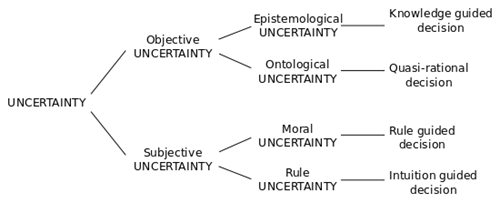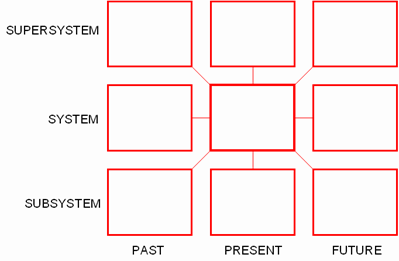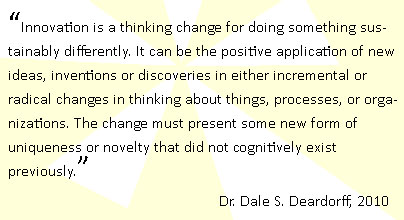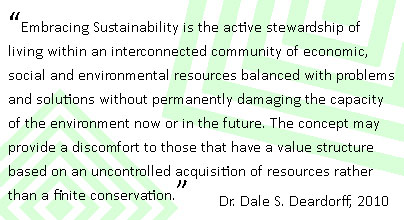|

Leading Uncertainty & Complexity in Modern Organizations
In modern organizations, we are challenged daily to anticipate the uncertainty of events and activities that may or may not happen which directly affect the efficiency of the enterprise. Additionally, we need to understand and react to situations, products and processes that are based on complexity are central to a functional positive environment.
To create this new awareness requires leaders to become stronger than they have been previously. These same organizations must become intuitive and agile to model the behaviors of becoming flexible and adaptive. More important is the need for leaders to embrace a new set of people and relationship based skills and characteristics through a leadership Evolution, not a revolution!
We don’t need new leaders, we need the current leaders in modern organizations to step forward and accept the responsibility for the interconnected impact they have on others. If I was to ask you what type of leader you are….the response answer is usually a single word description, like “I am a Transformative leader, or Participative Leader.” The problem is that there are well over 100 different named leadership styles if you go to the internet and search. Many styles overlap in their attributes but most of them take a single positive characteristic and exploit it.
Many modern leaders are trained and educated to be aware of the difference between Management Control versus Employee Control leadership styles. Those same modern leaders are also typically well versed on the differences between Transactional, Autocratic, Bureaucratic, Charismatic, Participative, Task-Oriented, People-Oriented, Servant and Transformational leadership styles. They have heard of Authoritarian, Democratic, Laissez-faire and Transactional leadership styles with clear clarity on Visionary, Epithetic and Ethical leadership models. The list goes on and on and unless you have created personal leadership taxonomy and compared each one against each other they all start to blur together.
Additionally what is required for organizations are “Leaderful” teams that are composed of team members who are willing to step forward at different points in time and take the leadership role and function as the team leader. What we are describing is a fluid interconnected community of empowered team members who are willing to assume leadership in the moment. Everyone is expected to contribute what they can and sometimes more than they can. All team members may not have the competence or the experience to contribute in like ways and amounts, but everyone is expected to contribute the skills and talents they have.
A single leader can only generate a limited number of ideas and concentrate on only so many things. A critical mass of leaders allows for more possibilities, solutions and ideas to be filtered by the group. The demands of evolving and changing organizational situations requires the ability to seamlessly shift from one leadership style characteristic to another adapting to the unique and potentially different events and interactions that are constantly happening around you. This requires a unique Leadership style which can be sustainable and consistent with positive values so you do not act or behave as an anti-leader.
Examples of anti-leader characteristics are inconsistency, lack-of-respect for others, indecision, narcissism, and uncaring behaviors. How often have we seen pseudo leaders that use command-and-control demanding requests, manipulation and stretching the truth to get the resources they need to succeed? More importantly is when those same anti-leaders are positively rewarded for this behavior?
The poor leadership behaviors we just described are many times responsible for the failure of companies through low productivity, win-lose scenarios, a lack of focus in the areas that actually need it and low morale of employees. The only way to accurately describe this is by referring to it as dysfunctional leadership sometimes called toxic leadership.
 AGILE+ Leadership AGILE+ Leadership
Clearly what is required is a leadership style that we can all personally evolve into to create a positive impact on people and our organizations. Agile Leadership is the ability of a leader to be able to lead well in a wide range of circumstances especially new, changing and ambiguous situations. Agile Leadership is associated with leaders who have the ability (and agility) to operate in any one of 4-Thinking modes such as system thinking and most importantly the ability to see things from the perspectives of the other thinking modes. It is this ability to think in a number of different ways that can give leaders their agility.
An important point to make here is that we are looking at different leadership “Modes” not styles. Each of the Agile Leadership modes describes levels of ability to deal with increasing degrees of ambiguity and complexity.
- Mode One – Technical Leadership. These leaders usually deal with ambiguity by denial or creating their own certainty. They are also more dictatorial and are very risk averse by nature.
- Mode Two – Cooperative Leadership. The aim of mode two leaders is to disambiguate uncertainty and to build teams around them to mitigate risk.
- Mode Three – Collaborative Leadership. Mode three leaders have a tendency towards consensual methods of leadership. They prefer to work towards aligning team member’s values and getting agreement. Their approach to ambiguity is for the group to examine it.
- Mode Four – Generative Leadership. These leaders use ambiguity to find opportunity. They tend to be inveterate learners and innovators.
But what is missing is the “People” and relationships mode – a fifth mode that can be called Value Partnership Leadership. This fifth mode can be added creating a new model for leadership which embraces uncertainty, intuition, complexity, people and relationships. Hence a model called AGILE+ Leadership is developed.
Recognizing the need to add a people based thinking mode provides us the opportunity to create what I refer to as “Value Partners”. These are individuals who are not seen as our most ‘important assets’ on a balance sheet but much more. They become “Partners” in our thinking and require a relationship based connection with us which is interdependent and based upon common values.
So what is important to one person should also be important to the other as well. Success of one person is dependent upon the thinking input of others. Teams and team based thinking can be difficult because you get the best and worst thinking from everyone – this sharing process is what creates synergies and ultimately allows us to move forward in a positive direction but sometimes uncertainty influences that path.
 Uncertainty Uncertainty
The generally accepted definition of Uncertainty is a situation where the current state of your knowledge is such that the order or nature of things is unknown, and that the consequences, extent, or magnitude of circumstances, conditions, or events is unpredictable preventing the ability to determine credible probabilities to possible outcomes. We don’t want to get sidetracked into a conversation about probability or complexity theory. We want to understand the basics for leadership situational decision making.
When we talk about uncertainty for leaders, it can be seen as a sign of personal incompetence. This is because leaders are the “Seer’s” for the organization and decisions must be based upon complete knowledge of the past, present and future. This puts leaders in a position where they are expected to know everything all the time. In the figure below you can see a decision tree for uncertainty that illustrates that decision making can be separated and based on both subjective intuition and objective knowledge.

Uncertainty Taxonomy
The blend of chaotic flux that leaders encounter in day-to-day decision making requires a mentalist, magician, or illusionist if we look at uncertainty without some form of organizational logic. What great leaders can bring is a balance of both subjective intuition and objective knowledge to their organizations. The ability to “anticipate” the results of the next step can allow a prediction about the future environment. This can be perceived as leadership common sense but is actually much more.
Leaders who base their decisions on the input of their team members are much more likely to experience success. The ability to create an organizational environment where open and honest communication exists is not easy, but it is achievable. This type of decision making is not truly collaborative. It requires the leader to listen to the input from others who all have a different personalized point-of-view. Then these leaders must evaluate the information available and using sound judgment determine a decision that is best for their organizations and teams.
You can’t just flip a coin and decide between two different perspectives. Many times you must create a blended decision that is the most appropriate at that time. Too often we forget the external factors and assumptions that were utilized to make a decision. What is even more problematic is that the effects of poor leadership decision making may not be immediately apparent. It may take time for the consequences to surface. Sometimes the leader that made the poor or bad decision has moved on to another project or program and has no accountability to the original decision.
So how can we assure that the best decisions possible are being made by leaders who are surrounded by uncertainty?
Leigh H. Bailey, author of “Grown Up Leadership”, and founder & CEO of The Bailey Group offers the following advice to leaders in times of uncertainty and fear. He feels it is critical for leaders to learn how to manage themselves in addition to their people through three key characteristics of effective leadership:
- Maturity – Self–Awareness and Self-Management to understand your strengths, weaknesses, blind spots, fears, delights, stressors and energizers.
- Versatility – Acknowledge biases, understand what worked in the past may not work in the future and be flexible to adapt to changing conditions.
- Relationship-Based Leadership – Enhancing and leveraging strong interpersonal skills, developing others to build effective teams.
By identifying, facing, accepting and dealing with your own fears, you can help move your organization forward in a positive direction. The development of a wide range of complementary leadership skills to develop the ability to listen, relate to others and being accessible to others can create a bridge to a better future.
What is also required is a team environment where knowledge leaders are willing to step forward and help guide activities, make decisions and recommendations based upon their personal expertise. We need Leaderful leaders and teams.
 Leaderful Leadership Leaderful Leadership
In a conventional or traditional leadership model, there is typically one leader, and their job is to direct the organizational members to complete the tasks and goals assigned. This leadership model is serial, individual, controlling and dispassionate to execute the assigned directives. These organizations rely on a single leader to “save the day” and provide order and stability. They look for these single leaders to successfully diagnose the environment and make correct decisions. It encourages dependence not interdependence and considers leadership a unidirectional phenomenon.
For these organizations to remain adaptable, leadership must occur in different areas, not just from the top. Under a new paradigm of leadership we want to transform the leadership experience into a more interconnected and fluid collective practice. Our knowledge-based organizations require that everyone share the experience of serving as a leader, not sequentially, but concurrently and collectively. In other words, these leaders will serve at the same time and all together. The environment (system) that we lead has become so complex that no single individual could discern all of the elements and impacts.
To be Leaderful, you do not need to be in the designated leadership position of your organization, it is understood that everyone participates at different times depending on the situation and knowledge or skills required. Everyone is capable of exerting leadership, but the Leaderful process requires that you have to give up some control to gain a distributed collaborative leadership model. In this model, everyone’s ability and talent to contribute to team goals and decision making is enhanced. Additionally, people need to have the opportunity to practice leadership and see the impacts of their direct participation.
Joe Raelin, the author of Creating Leaderful Organizations tells us that we can all become more interconnected and fluid by adopting the “Four C’s of Leaderful Practice Leaders” as summarized by his tenants described below.
- Concurrent - In any organization, there can be more than one leader operating at the same time, so leaders willingly and naturally share power with others. Indeed, power can be increased by everyone working together.
- Collective - Decisions are made by whoever has the relevant responsibility. Leadership may thus emerge from multiple members of the team especially when important needs arise, they should prepare for a strategic mission, creating meaning for the group, by proposing a change in direction.
- Collaborative - They may advocate a point of view that they believe can contribute to the common good of the community. They are equally sensitive to the views and feelings of others and consider their viewpoints to be equally valid. They seek to engage in a public dialogue in which they open their beliefs and values to the scrutiny of others.
- Compassionate - Each member of the organization is to be valued regardless of his or her background or social standing, and all viewpoints are to be considered regardless whether or not they conform to current thought processes.
One advantage of a Leaderful style is that it embraces the diversity of thinking, skills and experiences of everyone on your team helping to establish a distributed leadership community of collective practice. Anyone who works with others in any capacity has the capability of leadership. This type of organization is not leaderless because they are deprived of leadership; it now becomes leaderful because they are full of concurrent and collective leaders.
The perfect illustration for Leaderful leadership is the difference between a soccer team and a football team. A football team has a quarterback that commands specific directions. A soccer team has a flying formation of people who are all working together as an organic and fluid community of players.
Earlier, we discussed the need for organizations to accept and embrace complexity in project and programs. Today, almost all leaders are asked to provide team leadership over complex areas that they may not have direct experience with. These teams are typically assembled with members who all have unique, specialized and solid educational backgrounds and skills. Their team members have the tacit knowledge which provides a clear understanding of that technology.
Waiting for a traditional command & control leader to get technically briefed or up to speed on the technology, the situation and the details causes leadership stagnation and many times poor decisions. Allowing other team members in this community of practice to step forward and accept the leadership role to help make these complex decisions makes more sense. It provides a level of distributed leadership, flexibility and the ability to break down traditional bureaucracies.
But this model of Leaderful leadership means you must learn to give up some control at times and share power with others to increase the teams ability to work together. Additionally, this means that you need to recognize an awareness of your personal limitations. The collective values of all members of the team are intrinsically interconnected in the Leaderful leadership model. We need to help create organizations and teams that empower the members with the capacity and willingness to assume that leadership role in the moment.
 Complexity Complexity
Without getting into a discussion about chaos or computational complexity theory, we need to clarify the linkage of leadership roles to complexity. In clear terms, what we are trying to do is create “Simplicity”. In most leadership conversation, the term complexitytends to be used describing something with many parts in an intricate arrangement. To understand complexity, you must accept a systems thinking approach where the philosophy of connection, interconnected and multidimensional become part of your value stream vocabulary.
“Complexity is your enemy. Any fool can make something complicated. It is hard to make something simple” – Richard Branson
Leaders are responsible for their organization’s value stream and the systems associated with it, which can be time phased and described as the Past, Present and Future. Additionally, this value stream is interconnected and characterized at multiple levels within the organization which can be described as the Sub-System, System, and Super-System. When trying to understand a Leader’s impact to the organizational value stream, use the Nine Boxes Thinking Tool (illustrated below).

Nine Boxes Thinking Tool
Using the Nine Boxes approach will allow you to simplify any value stream by breaking it apart into clearly understandable components, elements or interactions. These are then characterized in space and time to create a historical description. It allows you to set the system context defining the value stream environment mapping. By setting the boundaries in space and time you can think of all of the possible domains that the value stream can exist in. You would fill out the boxes with information on the:
- Past - The circumstances and ideas of the organizational value stream up to but not including this point in time
- Present - The circumstances and ideas of the organizational value stream at the present time.
- Future - The circumstances and ideas of the organizational value stream from this point forward in time.
Additionally, by separating the value stream impact into its systems location we can create a transitional Macro and Micro perspective:
- Sub-System – A sub-group of related organizational value stream ROI components that are part of system.
- System - A group or combination of interrelated, interdependent, or interacting elements forming the organizational value stream ROI.
- Super-System – An enterprise system containing multiple organizational value stream ROI sub-systems.
By breaking the organizational value stream into these separations and categories, we can simplify the complexity of understanding it. Traditionally, to use the Nine Boxes tool you would start by describing your current system at the present time (middle box) and get it defined and described. After that, you can explore any of the other boxes in any order, but should complete the description of your current situation first.
This unveiling of the “System” allows a clarification which leads to simplification for understanding. Once it is documented and all 9 boxes are enumerated, it can become a tool for sharing information which can contain different time and space domains. We could just as easily have used any input stimulus (series of words) to start with inside the Nine Boxes Tool, so it can be used for any Leadership challenge you encounter.
The pace of change accelerates and complexity increases, especially in highly technical fields. To work at your fullest capacity, you must understand the limit of Complexity you can handle to comfortably deal with ambiguity and assumptions.
Simplicity makes things easier to understand and execute increasing everyone’s efficiency and effectiveness. Very rarely does complexity make us successful when trying to differentiate situations. Usually it seems that there are too many feedback loops and interdependencies to control the system. Change one thing here…and something moves elsewhere with no apparent connection. Systems diagrams, roadmaps and flows all seem to be missing an explanation for why things are connected. Clarity exists for a period of time and then dissipates into a messy lack of understanding and leadership control.
What is clear is that uncertainty and complexity are here to stay. Leaders and organizations need to be flexible and adaptive in how they interact with their people, processes and products. The only way to achieve this is a purposeful evolution, not revolution to embrace an AGILE+ Leadership model combined with a Leaderful organizational structure. Blending the ability for anyone to step forward at the right time to help lead, make decisions and create a new leadership balance.
This proposed leadership balance described above is based on the needs of our people resources embraced as partners in our organizations. Leaders will continue to face periods of ambiguity and change requiring confidence to be ready to contribute to their organization’s strategic agenda. By the living system evolution described, they can become authentic leaders based on positive values ready to execute with complementary skills that can “strengthen strengths and weaken weaknesses.”
Dale S. Deardorff |










